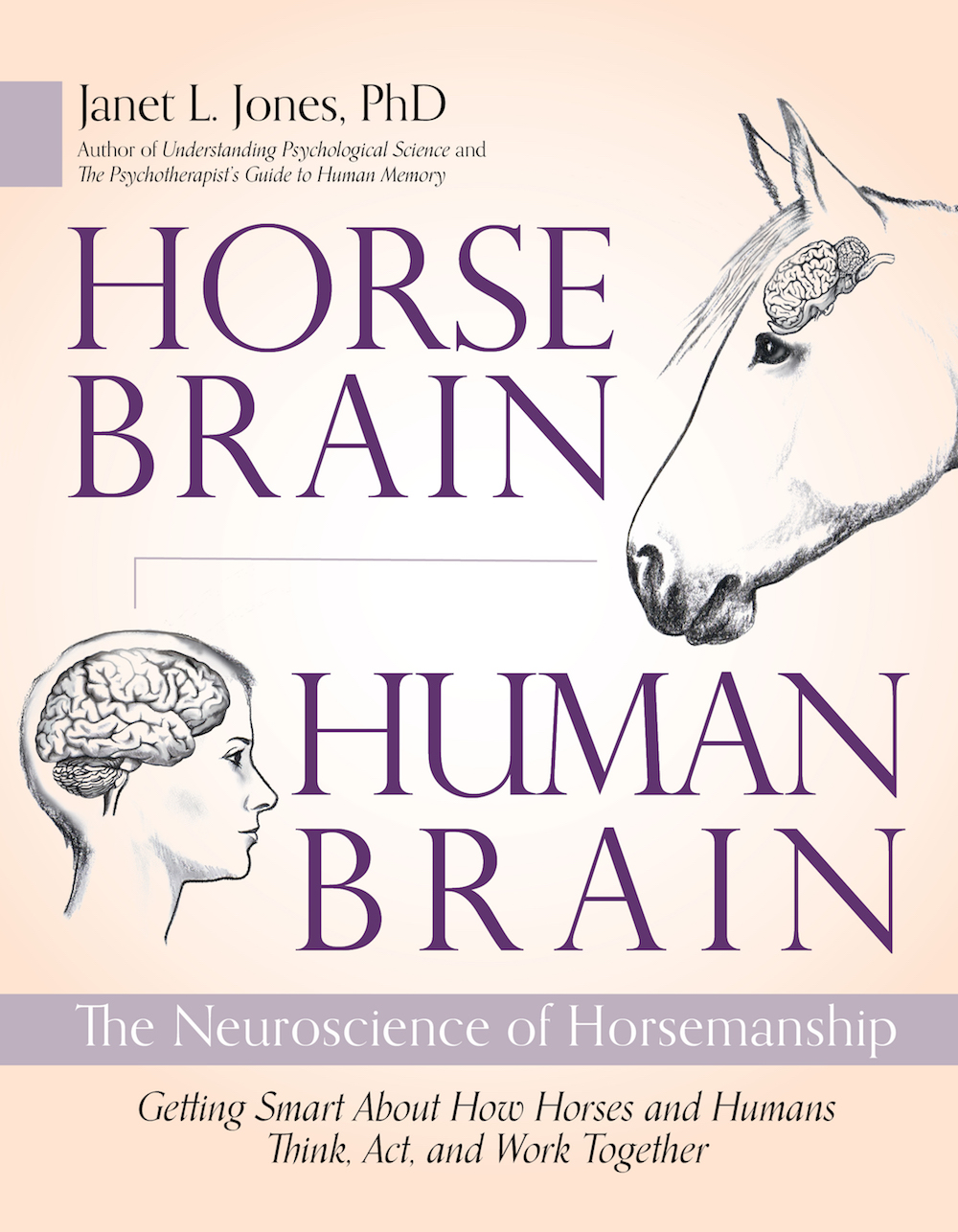My green Warmblood True is doing well with his early hopping lessons, except for one little thing. I call it “crosspole roulette.”
Crosspole roulette is evidently some kind of equine game that young horses enjoy. The object of the game is to have lots of fun, test variations in jumping form, and maybe even unseat the rider. Woo-hoo!
Basically, it goes like this: We trot to a low crosspole that True has jumped 30 or 40 times in the past weeks. It looks just like it always does. He trots to the base of this little jump, hops over sweet as can be, and canters away. Perfect, right?
But wait. He’s only just begun the game.
At some random point—I would be the last to know exactly when—True trots to the base of the crosspole just like always, looks down at the very last second, cracks his back, and LEAPS to the high heavens pulling his four legs tight up against his belly. Being the equivalent of a lightweight cork on top, I sail upward into what must look like the world’s best anti-equitation position.
If someone recorded this episode—don’t worry, I’ll die first—you’d probably see a rider’s horrified face, mouth agape and eyes enormous. If the recording had audio—again, no chance—you’d hear a stream of invective including a few rare four-letter words from my crusty old cowboy days as a teenager in Arizona.
What makes the game a roulette is that I never know when or if True is going to insert the leap. If I knew, I could prepare. Shove more of my weight down into my heels, sit a little taller, beware of the last-minute head drop, add a tiny bit of leg off the ground to move him horizontally and offset the vertical trampoline move.
But no. He never gives me a warning.
He will hop the crosspole consistently and perfectly time after time. Nothing changes in him or me or the jump or the environment. And then suddenly, BOOM! The giant leap occurs. When he leaps, he clears the crosspole by at least four feet. OK, two feet. Occasionally, three—honest! It’s like he suddenly thinks he’s Simone Biles.
Young horses just learning to jump do overestimate height on occasion. But it happens in a pattern—the first time or two over a new obstacle, the first time over a solid obstacle, the first time over something very bright or unusual, the first time over a flower box in the wind with flowers waving this way and that, or the time when some neighbor shoots a gun just as we are leaving the ground.
All of that is to be expected. But True has no pattern; he generally jumps smoothly over everything except for those random moments when he does not.
My first solution was to trot back and forth over the same crosspole several times, until he jumped it consistently at proper height. Trouble is, the random leap always occurs somewhere. It would be rare to get five good trials without one flying leap.
Second solution was to walk over the crosspole until he settled completely down and felt very relaxed. That improved relaxation, but didn’t affect the random leap. True could saunter to the jump with Yoda Ears and eyes half closed, but still leap with no warning.
I’m now on Plan C, a two-pronged effort. First, I’ve discovered True is less likely to play crosspole roulette with a longer, harder warm-up prior to the jumping part of our session. I usually warm him up for about 20 minutes before jumping. Now I go for 40 minutes, and keep him working.
Second, I ask for a tiny bit more pace. Not just while hopping our little fences, but on the flat, too. This way, I am encouraging him to move forward horizontally rather than suck back and get all that vertical hang time in the air. Will this work? I’m not sure.
I’ll let you know how it goes. Meanwhile, if you see an unmounted rider sailing through the air horseless, please say hello!
Related reading:
- Pre-Checks for Jumping
- One Little Pole on the Ground
- Raised Poles
- Pole Sequences
- Interruptions
- Leaving the Ground
- Legs
Brain-Based Horsemanship is a weekly column that chronicles Janet Jones, PhD, and her journey with True, a Dutch Warmblood she trained from age three using neuroscience best practices. Read more about brain-based training in Jones’ award winning book Horse Brain, Human Brain.

A version of this story originally appeared on janet-jones.com. It is reprinted here with permission




 November 15, 2023
November 15, 2023 






















